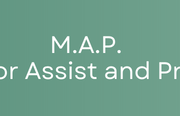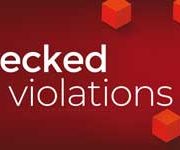Who capture Italian media for private interests
This lesson was held by Alberto Spampinato at the University of Sheffield Summer School, Saturday 29 june 2019, with the coordination of William Horsley
In recent years the Italian NGO “Ossigeno per l’Informazione” (Oxigen for Information) has devoted most of its energy to documenting the threats and intimidation suffered by journalists in Italy, in very large numbers. Many of these cases of intimidation could be limited and prevented by strict laws and better law-enforcement practices. Some improvements to Italy’s very harsh laws on libel and defamation, which are often used against journalists, have been promised for several years, but have still not yet been introduced. Unfortunately the political will i lacking. And it is difficult to change the situation because these deep-seated problems are not yet subject of proper public debate and voters do not know or care much about them.
The title of this session is “the capture of media”, so I must start by saying that Italy presents a serious case of “media capture”, which takes several different forms.
Conflict of interest
First of all, a major problem of conflictof interest arises because of the conflict of interestinvolved when leading politicians have direct interest in, and control of, media and publishing. This problem became internationally famous when twenty years ago when Silvio Berlusconi was Italy’s prime minister for about ten years. His media empire include a large part of commercial television market as well as magazines and a national newspaper (Il Giornale, owned by his brother) . And while he was on charge he exerted dominate control of the main public TV channels of RAI, the national public broadcaster.. Berlusconi misused his extraordinary control over the Italian media scene to largely set the news agenda in his own way. In particular, he was able to ensure that Italian voters were never told clearly the full story about the multiple criminal cases brought by Italian prosecutors against the prime minister – included charges of sex with under-age girls, corruption and tax evasion on a large scale.
The Economist newspaper, based in London, reported the known facts about the alleged wrongdoing in detail under the headline “Unfit to govern Italy”. Mr Berlusconi brought a lawsuit against The Economist and lost. In the end he was ordered to do a period of community service, but he was never sent to jail. And many of the charges against him have either lapsed because state barred, or have never been resolved.
Recently Ossigeno sent a file of evidence on that issue of not fully regulated conflict of interest to the Geneva Human Rights Council , which is now considering various human rights issues in Italy as part of the process called the Universal Periodic Review (UPR), to which every UN member state is subjected once every four years. In that note, we added that another important unfilled commitment concerns the governance of the public broadcasting system, which is still subject to political control by the government and the parties that make up the parliamentary majority. In 2015, contrary to Italy’s commitment under international law, the government parties strengthened their control over TV and radio with a new law. The negative effectson media pluralism, and partisan TV reporting of politics and elections, is now clearly visible.
How Mafia obstacles the unwelcome news
Organised crime – the mafia – also exerts powerful controls over the media reporting, which has been well documented by experts. And that influence is now increasing due to the economic crisis and the severe difficulties of the media and publishing sector. On this issue Ossigeno recently leaded a specific study, a facts-finding mission made together with its international partners of the ECPMF Centre. Results are given in the report “Much mafia, little news” that you can read in the English section of Ossigeno website (ossigeno.info). This malign mafia influence shows itself in various ways. Firstly it means that systematic pressures and threats against the media are not reported. Secondly, many important news developments, which are of obvious public interest, are effectively censored. Thirdly, the high level of intimidation and threats aimed at big media and small media alike, include journalists and bloggers, those who strive to carry out their profession in an ethical way, publishing information that is welcome to the powerful and to criminals, have ti live in anxiety of fear of being targeted – either by threats of violence or the threat of severe damage to their business. There are dramatic situations. From years, twenty journalist are protected permanently by policy escorts because they have been threatened to dead. Other 167 are also guarded by law enforcements for the same reason. Other hundreds are also at risk but have no protection at all and sometime neither solidarity. It must be remembered that the mafia carry out its lucrative business with the complicity of politicians and business people.
Physical threats, intimidation, retaliation and the gag of the fake libel charges
The worst kind of influence is of course the physical threats, intimidation and retaliations that hit many Italian newspapers, as well as spurious libel lawsuits with massive claim of compensation for “damage to reputation”. In Italy that is a real scourge because of the punitive legislation which puts media operators at an unfair disadvantage under the law.
Ossigeno devots all its attention to this problem, trying to unveil it and to assist victims, because it is the most dramatic and urgent to deal with. It is an existential threat to freedom of the pres. Until this deep-rooted problem is not overcome there will be no hope of seeing other serious problems for Italian democracy resolved either.
The special Ossigeno monitoring and its surprising results
Before showing the main data it is needed to say from what a special source they come. Indeed the Italian NGO “Ossigeno per l’Informazione” is the only independent non-governmental observatory in Europe that for ten years has been conducting continuous monitoring of threats to journalists, bloggers and other information workers made in order to threaten them or intimidate them due to (OF) their activity and to limit freedom of press and expression.
This monitoring has the particularity of being based on the direct observation of the phenomenon through a scientific method developed, codified by the same Ossigeno and tested by national and international institutions. The handbook on the Ossigeno’s method in english can be downloaded here https://www.ossigeno.info/le-nuove-lenti-per-vedere-minacce-e-censura/?lang=en
Therefore Ossigeno has been able to reveal in detail 3921 certified threats and intimidation between January 2006 and June 2019, of which 137 in the first six months of the current year. It would not have been possible to know much of these threats by leafing through the newspapers. Every episode made public by Ossigeno is rigorously true, it is not feasible because it has undergone rigorous fact checking. This has been recognized by the parliament and by numerous national and international institutions.
Moreover Ossigeno has been able to reveal through official statistic coming from the Government that in Italy each year there are 5.900 new penal allegations for libel and more than 90 percent of them are untrue and are filed by judges. Neverthless each year 155 people (mostly journalists) are proved guilty and sentenced for jail for a total amount of 103 years. The quality of Ossigeno’s work is well known to the Representative for Freedom of the Media and to his office in Vienna, which over the past ten years has repeatedly used Ossigeno’s documentation to request explanations from the Italian Government.
For the scientific methodology used and for the ability to detect episodes never reported by the media, Ossigeno data are also considered indicative of how even in other European countries the freedom of information can be limited with violence and abuse.
THE LATEST DATA
YEAR 2019 – In the first 6 months of 2019 Ossigeno per l’Informazione certified and reported publicly more than one threat a day: 249threatened in 179 days (on average 1,4 per day) of which 137 were verified and certified as true, while the others were classified probables.
YEAR 2018 – During the year 2018, Ossigeno per l’Informazione reported 482 serious and unjustifiable attacks in Italy against 959media operators. Only 270out of 959 episodes were verified and certified as true. Their names were added to the Table of Threatened and to the main Counter of Threats All the other 689 names were publicly signaled as victims of probables violations of art. 10 of the ECHr.
TREND – There is a sensible difference between violations certified the year before, that were 423. It is useful underline that the number of violations that Ossigeno can verify depends a lot from the amount of funding collected by Ossigeno to finance this work, that is made by skilled observers, part of which are volunteers and part paid cooperators.
ONLINE THREATS detected were 11% of the total.
Women represent 40% of online threats.
The online attacks on women journalists were recorded in 7 different regions, but 71 percent occurred in two Regions: Lazio and Sicily.
TIP OF THE ICEBERG – From 2006 to 2018 has certified and made public 3778 intimidation and threats to media operators occurred in Italy. This amount seems very big, buti t show only the tip of the iceberg: to take into account the submerged mass, each number must be multiplied almost by 15.
THE SUBMERGED PART – A large part of intimidation and threats remain submerged, not visible. These are the main reasons: many episodes are not reported by the same victims because they think it is too risky for them. To obtain information from them, it’s necessary to gain their confidence and promote public solidarity toward them. Unfortunately to make visible this submerged mass of violations it is not useful reading newspapers or internet news or sending questionary around. It need skilled work. Also the active research of violations (and their accurate verification) means skilled and continuous work. It is very difficult to find someone that pay for this. The Italian Observatory collect fund only as donations or financing of specific projects from public institutions. This way has uncertain hand very limited resources. As a consequence is able to patrol only a portion of the field of observation and that same part change year by year.
Why we need certified monitoring
Ossigeno opinion it is necessary to break down everywhere the wall of indifference towards violences and abuses against journalists. Rhetorical denounces has shown to be ineffective to reach this result. It is necessary to document and make public as many violations as we can do, but only really violations against people that act correctly and in the public interest. For that we verify each episode in such a way that become impossible to deny it, in a way able to prevent observers from falling in the serious mistake of spreading fake news about journalists threatened That is necessary. That is possible non only in Italy, but in all country were the rule of law is applied. This is what Ossigeno tested for ten years in Italy. ASP
See the names of the threatened online https://www.ossigeno.info/la-tabella-dei-nomi/





Leave a Reply
Want to join the discussion?Feel free to contribute!